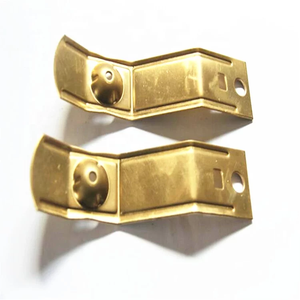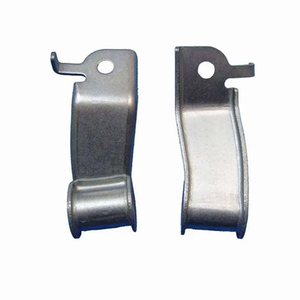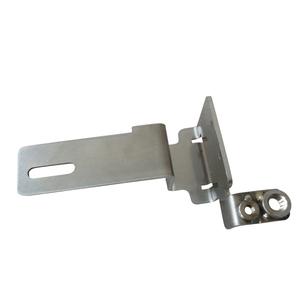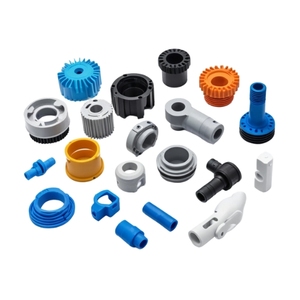
All categories
Featured selections
Trade Assurance
Buyer Central
Help Center
Get the app
Become a supplier

(36827 products available)














































Metal injection molding uses diverse materials. They include:
Stainless Steel
Often, stainless steel is among the most common alloys used in mim metal injection molding. This is due to its sternness, corrosive retardance, and versatility. Typically, it comes in variegated gradations, which can be fabricated to accommodate distinct needs. Regularly, grade 316L, infamous for its exceptional resistivity to corrosion and durability in demanding settings, is oft utilized in medical, chemical, and marine applications.
Copper Alloys
Customarily, copper and its alloys, such as brass and bronze, are used in metal injection molding. This is due to their electrical properties, thermal qualities, and machinability. Thoroughly, variegated applications such as electrical components and automotive parts often prefer molded parts made from these metals. This is because they provide refined conductivity and resilience.
Titanium
Stainless steel is normally regarded as a resilient and lightweight alternative. Usually, it is highly valued in sectors demanding retardance to corrosion and high-temperature stability. However, titanium is more expensive, and its processing requires elevated temperatures, which are expensive.
Ceramic Materials
Ceramics are typically not metals. Nonetheless, they are regularly utilized in mim processes to produce materials that amalgamate the properties of metals and ceramics. Commonly, these materials are retardant to wear and corrosion. Often, they are deployed in applications where heat resistance is critical. Normally, electronic devices and automotive components utilize metals that have been ceramic coated.
Low Expansion Alloys
Customarily, alloys like Invar and Kovar find their demand in specialized applications requiring high stability and low thermal expansion. Usually, such materials are indispensable in the electronics industry. This is because these alloys maintain their dimensions in areas confronted with variable temperatures.
Nickel Alloys
Standardly, nickel and its alloys are delineated to resist corrosion, oxidation, and high temperatures. This makes them highly suitable for metal injection molding. Often, these materials are essential in aerospace, chemical processing, and oil and gas applications. This is where durability under harsh environments is a requirement.
Metal injection molding is crucial in diverse applications. They include:
Automotive Industry
Customarily, mim plays a pivotal role in producing variegated components for the automotive industry. This ranges from gears and bolts to exhaust systems and engine parts. Ideally, with the increasing complexity of modern vehicles, the demand for precision-engineered components has also escalated. In addition, these parts are regularly manufactured with exceptional accuracy and consistency, which can greatly enhance the performance and reliability of vehicles.
Electronics
Usually, metal injection molding is habitually utilized to create intricate components in the electronics industry. Often, these components include housings for connectors, sensors, and other devices. Besides, with the growing demand for lightweight yet robust materials in electronic devices, mim becomes increasingly indispensable.
Medical Devices
Conventionally, the medical device sector requires parts with tight tolerances and complex geometries. Normally, metal injection molding meets these needs exceptionally. Moreover, components such as surgical instruments, implants, and diagnostic equipment parts are often produced using this technique. This guarantees the durability and precision of these crucial devices.
Aerospace Components
Customarily, in aerospace, the demands for weight reduction and unparalleled strength are both a constant. Normally, metals that are injection molded like titanium alloys and stainless steel, offer a unique combination of these attributes. They are utilized in producing components such as brackets, fasteners, and landing gear parts. Regularly, these materials are crucial for ensuring the safety and efficacy of aircraft and spacecraft.
Consumer Products
Often, mim is also employed to manufacture components in various consumer products. These are products like household tools, sporting goods, and outdoor equipment. Moreover, by utilizing this process, they can be able to achieve intricate designs while simultaneously reducing production costs. This ultimately results in high-quality products that meet the customers’ expectations.
Locking Mechanisms and Hardware
Apart from these industries, metal injection molding also produces intricate locking mechanisms and hardware. Usually, components in security systems, such as locks and keys, are manufactured with conspicuous precision, ensuring seamless functionality and durability. In addition, this technique allows for the integration of complex designs that are challenging to achieve through traditional machining alone.
Ideally, Metal Injection Molding has diverse merits. They include:
Cost-Effective Production
Occasionally, one of the notable benefits of metal injection mold is its ability to lower production costs. Besides, this technique allows for the mass manufacturing of complex components. This minimizes the need for intricate machining processes. Regularly, it leads to substantial cost savings in labor and material. Moreover, this efficiency becomes indispensable, especially when dealing with high-volume production.
Design Flexibility
Conventionally, Metal Injection Molding offers a remarkable degree of design flexibility. Customarily, this process can produce intricate shapes and configurations that are usually arduous to achieve with traditional manufacturing methods. In addition, this capability accommodates the creation of complex geometries. Often, they require less assembly. Henceforth, it enables innovativeness in product design.
Consistent Quality
Standardized quality is regularly a critical advantage of Metal Injection Molding. Customarily, this process ensures uniformity in the produced parts. This is usually due to its automated nature. Often, it leads to components that possess consistent dimensions and properties. This is beneficial in numerous applications, particularly where precision is critical. Such spaces include automotive and aerospace industries.
Material Variety
Typically, Metal Injection Molding accommodates a broad array of materials. These materials include stainless steel, titanium, and other alloys. Also, each material comes with unique benefits. For instance, they offer distinctive properties, including corrosion resistance and high strength. These attributes make Metal Injection Molding applicable in various sectors with variegated needs.
Reduced Assembly Requirements
Customarily, one notable advantage of mim is the reduction in assembly requirements. Often, this process produces components that integrate multiple functions. Usually, it minimizes the necessity for separate parts. This not only streamlines production. Also, it results in more efficient assembly processes. This benefit also helps manufacturers in saving time. Henceforth, it leads to quicker product deployment.
As business owners make the choice of metal injection molded parts, there are various factors to put into consideration. Here are some of them.
Precision and Tolerances
Business owners should consider the level of precision and tolerances of metal injection molded parts. Usually, the metal injection molding process is known for producing parts with fine details and tight tolerances. Therefore, they should request information on the specific tolerance levels. This will ensure they settle for parts that meet the required functional and performance requirements.
Surface Finishes
The surface finish of the metal injection molded part can have a huge impact on its appearance and functionality. Business owners should get finishes such as polishing, texturing, coating, and how they will affect the part. They also should consider the aesthetic value and whether they will enhance grip or resistance to corrosion.
Samples and Testing
Before placing a bulk order, buyers should consider requesting samples. In cases where they will request samples, they need to be clear on how much they are willing to incur in case of the samples. Usually, they will need to pay for the samples, yet they will be refundable in case the order meets the required standards. Also, they should devote time and resources to performing quality tests. Such essential testing will enable them to ensure that they are settling for viable products.
Lead Times and Delivery
A business needs to always be in a position to meet customer demands. This can enable them to avoid stock issues and delay selling profitable products. To do so, they need to be aware of the manufacturing lead time. Therefore, they should consult with manufacturers and settle for terms that are beneficial to them in terms of timely delivery.
Functional Requirements
Buyers need to ensure that the manufactured metal injection parts will effectively perform the required functions. Therefore, it will be important for business owners to conduct thorough research on the key features that make such parts effective in performing specific functions. Also, they should get information on the possible long-term implications of such parts.
Manufacturing Capabilities
Business owners should first understand the metal injection molding process before settling for the manufacturer. They should consult various manufacturers and settle for the one that has the required equipment and metal powders knowledge. Also, they need to be aware of the possible challenges that such manufacturers encounter when dealing with certain metals.
A1: Metal injection molding involves mixing metal powders with binders to create a paste. After that, the mixture is injected into molds and then the binders are removed through heating. Finally, the metal is sintered. On the other hand, metal casting involves pouring molten metal into molds. Afterward, it solidifies. Simply put, metal injection molding is for complex and precise parts as long as casting handles simple and large parts.
A2: Yes, there are. Recently, there has been a growing interest in sustainable and eco-friendly practices in metal injection molding. Also, various manufacturers are exploring recyclable metal injection molding powders and materials. This is a move that aims to minimize environmental impact.
A3: Metal injection molding is beneficial to various industries. For instance, the automotive, electronics, and medical device industries. The effectiveness of this technique in producing complex and precise parts as well as high volumes makes it ideal for these industries that require such consistency.
A4: When properly processed, metal injection molded parts can achieve strength comparable. They can even be higher to density alloys. In addition, advancements in the sintering process have successfully improved the mechanical properties of these parts, making them suitable for demanding applications.
In order to choose injection metal molded parts, business holders need to pay attention to its material properties. In particular, they should focus on tensile strength, thermal expansion, and corrosion resistance. These factors directly affect the performance and the part's lifetime. Therefore, they will ensure the effective performance of the metal injection molded parts.